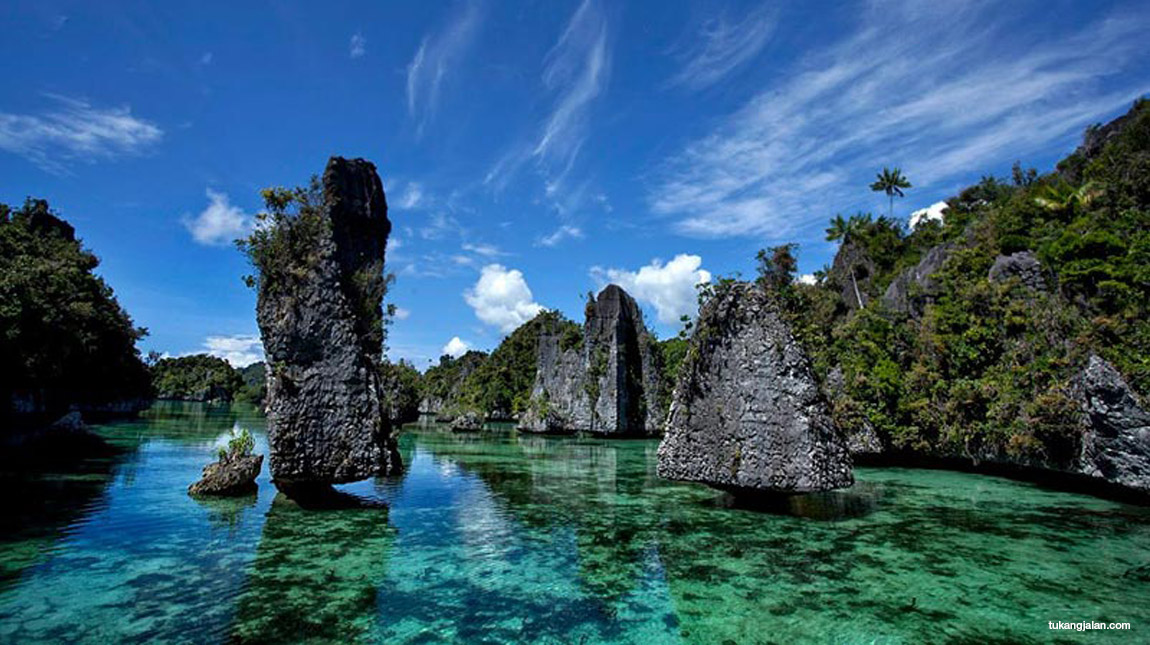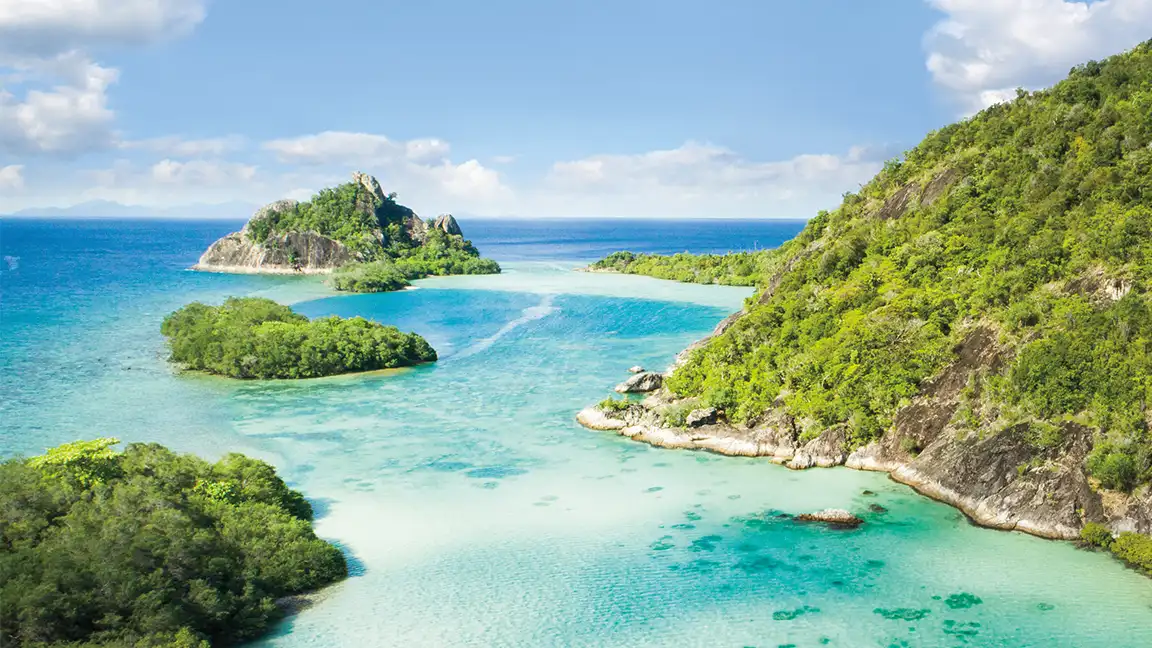Indonesian archipelago
Strictly speaking, gazetteers usually talk about the Malay Archipelago, the main part of which is occupied by Indonesia, undoubtedly the largest in the world.
Its 13,677 islands are scattered over 5,160 km of tropical seas. If they are superimposed on a map of Europe, they will stretch from Ireland to the Caspian Sea.
Many of the Indonesian islands are tiny and inhabited only by seabirds, while thousands of others are quite impressive. Thus, Java, Kalimantan (Borneo), Sulawesi (Celebes) and Sumatra are as large in area as, for example, England or France. In general, in terms of area (2 million square kilometers), Indonesia ranks 13th among the states of the world.
The unique geological and climatic conditions have created an unusually rich natural environment here. The flora and fauna are amazingly diverse, including rare species of mammals and reptiles, as well as birds with exquisite plumage, brightly colored large butterflies.
Island formation

These islands were formed as a result of thousands of years of tectonic activity, and it is not surprising that many of them periodically experience destructive and deadly volcanic eruptions.
Exceptionally fertile soils have formed in areas of volcanic ash distribution. Located in the equatorial zone, the islands do not lack moisture.
Abundant tropical showers fall at a temperature of 25-27 ° C (on the plains, this temperature lasts throughout the year). From November to May, precipitation and humidity increase markedly, while the rest of the year, dry winds from Australia bring less humid air.
Under different conditions, determined by precipitation, soils and altitude, a very diverse vegetation is formed. On the plain, in evergreen tropical forests, there are about 3 thousand species of trees (including several hundred species of fruit-bearing palms) and many exotic orchids.
At an altitude of over 600 m, the temperature is lower, and chestnuts, laurel trees, and oaks grow there. Even higher there are rhododendrons, edelweiss, and alpine meadows with their appearance resemble Switzerland rather than the tropics.
Ethnic melting pot.
The original inhabitants of the islands were probably the Australoids, who now inhabit New Guinea and other islands of Melanesia and have survived in small numbers in Australia.
They have dark skin, curly hair, pronounced brow ridges, and wide, flat noses. Then, as it is believed, these islands began to be inhabited by the Malayo-Polynesian peoples, who began to migrate through Taiwan and the Philippines about 6 thousand years ago.
Mongoloid groups with light skin and almond-shaped eyes originating from South China, having mixed with the indigenous population, acquired certain Australoid features, such as curly hair and dark skin.
Language diversity
Strongly increases with advancement to the east. In West Irian (Irian Jaya) alone, with a population of just over a million, people speak more than a hundred different languages.
For thousands of years these areas have remained relatively isolated, and many tribes in New Guinea hunted heads and used stone tools until the present century.
There are two main types of agriculture in Indonesia.
Ladang, or slash-and-burn agriculture, is practiced mainly in the interior and remote areas. This method cannot provide food for a large number of people and forces those who use it to lead a semi-nomadic lifestyle.
Savah, or irrigated agriculture, is mainly used for rice cultivation and requires a larger population to cultivate the land.
Religious practices and beliefs in Indonesia
Characterized by a variety of local traditions. The combination of public ceremonies, private rituals, communal ways and customary law, passing from generation to generation, forms the peculiar structure of each society.
Throughout Indonesia, this is known as the adat (custom) of a particular ethnic group. And instead of strictly following the rules of one of the four main religions that are common in the archipelago (Islam, Christianity, Buddhism, Hinduism), we find here an amazing eclecticism.
Central to most adat festivities is the ritual Sacrifice and communal feast, in which sacrificial food is offered to the spirits and then eaten together to ensure the well-being of the participants in the ritual.
The selama-tan ceremony (literally: “self-defense”), common in Java, is performed at birth, wedding, circumcision, death anniversary. In Bali, an odalan, or community festival, takes place every 210 days.
It is generally believed that such holidays contribute to the fertility and well-being of their participants by strengthening their semangat, or vitality.
Many peoples of Indonesia have a belief that semangat accumulates in the head and they can be “stocked up” by hunting for heads.
Even today, during the wedding ceremony, people exchange locks of hair, and the dancers’ outfits are adorned with human hair to strengthen the semangat. These life-force strengthening attributes are found everywhere.

The pillars of dwellings and weapons are often smeared with sacrificial blood to strengthen them. Rice cultivation is associated with rituals that are believed to promote the fastest germination of grain, which should ensure a good harvest.
In order to appease the souls of the dead, complex funeral ceremonies are held throughout Indonesia, accompanied by shamanic rites.
Great legacy.
The oldest hominid inhabitant of Indonesia was the so-called Javanthropus, a Neanderthal-type fossil man who belonged to the Homo erectus species and existed about 1.7 million years ago.
Its bone remains have been found in Java. Javanthropus was an omnivorous hunter and gatherer who lived in caves and open camps, the first creature to use fire. He also made processed stone tools – scrapers, axes, axes.
In the Neolithic era, the first farmers cultivated taro before growing rice, and seafarers were engaged in inter-island trade long before the advent of writing.
In the II century. AD a highly developed civilization arose in what is now western Indonesia, whose cosmology, architecture, and political structure were organized along the lines of those of India.
Emerged at the end of the 7th century. in East Sumatra, the Buddhist state of Srivijaya established control over the strategically important Straits of Malacca and Sunda.
This state dominated the surrounding seas for 600 years. Having built the largest ships in the region, it regularly sent them to the shores of India and China.
In the meantime, Java had grown into a great island empire as it became possible to sustain a large population through intensive irrigated rice cultivation.
The Hindu ruler Sanjaya was the first great temple builder known to us. Later it was replaced by the Buddhist Shailendra dynasty and its rulers erected majestic structures: Borobudur, Mendut, Kalasan and Seva.
Rakai Pikatan, a descendant of Sanjaya, overthrew the Shailendra dynasty in 856 and commemorated his victory by building the magnificent temple of Loro Jonggrang at Prambanan.
However, in 930 the capital was suddenly moved to East Java. Subsequently, during the reign of Raja Airlangga, the Sanskrit classics were translated into Javanese, which marked the birth of local literature.
